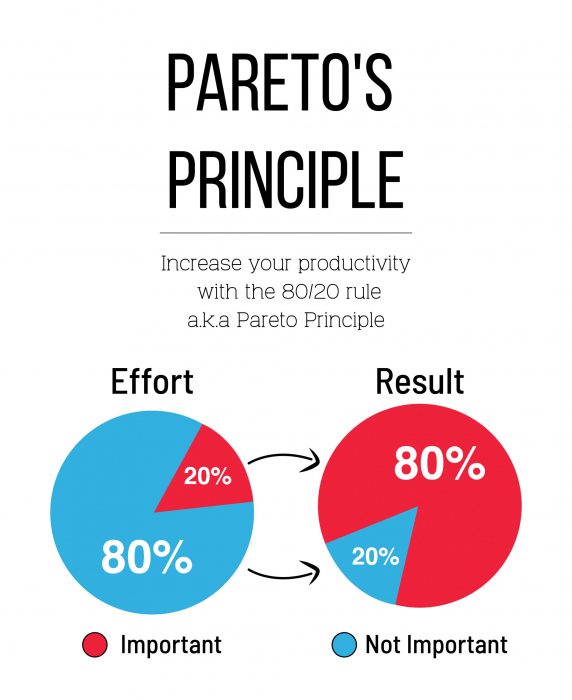What 20% of your work drives 80% of your business outcomes?
In 1906, there was an Italian economist named Vilfredo Pareto. One day Pareto noticed that every year, a small number of pea pods – 20 percent – produced approximately 80 percent of the healthy peas that he harvested. On the other hand, the majority of the pea pods gave him very few health peas: the remaining 20 percent.
This got him thinking, and he noticed this 80/20 ratio in Italy’s wealth distribution. Eighty percent of the land in Italy was owned by one 20 percent of the population. The observation came to be known as the 80/20 rule a.k.a the Pareto Principle which means that most things are distributed unevenly. For instance,
20% of input creates 80% of the productivity 20% of workers produce 80% of the results 20% of mistakes cause 80% of failure 20% of cold calls bring 80% of new customer acquisitions And so on…
Pareto Principle in Business Management
 The Pareto Principle is quite popular in business management. Organizations often find that roughly 80% of their sales come from 20% of customers. In the same vein, roughly 80% of their expenses come from 20% of their costs. The examples go on.
The Pareto Principle is quite popular in business management. Organizations often find that roughly 80% of their sales come from 20% of customers. In the same vein, roughly 80% of their expenses come from 20% of their costs. The examples go on.
The point is to realize that you can focus your effort on the 20% that makes an optimal difference, instead of the 80% that doesn’t add much to the results.
The 80/20 rule can be helpful to keep the focus on tasks that contribute most to the goals and results you want to achieve. You may also apply the Pareto Principle to your personal life. Consider which activities do most for your personal well-being.
How to Apply the 80/20 Rule to Achieve Maximum Productivity
- Pick a task where you feel there is an imbalance of input-output.
- Identify the key percent of inputs (10, 20, 40, 50, 80…) that are creating the most results.
- Find ways to emphasize the key results. Spend more time on activities that produce maximum efficiency.
- Find ways to eliminate the rest.
 Explore the 80/20 rule to identify what’s important and where you should be giving more focus.
Explore the 80/20 rule to identify what’s important and where you should be giving more focus.
We are often challenged with limited time, energy and resources to invest in everyday tasks. With the Pareto Principle, you can make sure that you’re spending your efforts on tasks that’ll deliver the highest return on investment.
Subscribe to the leading Human Resources Magazine to receive exclusive news and insights directly to your inbox.





